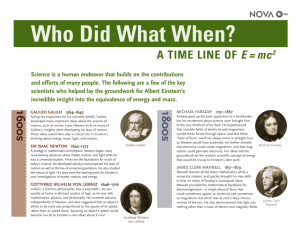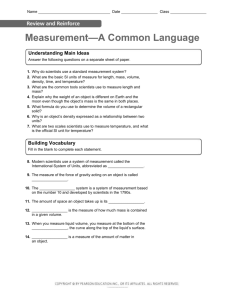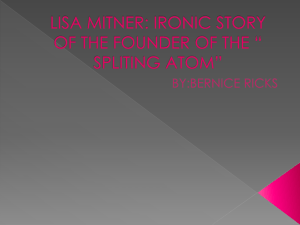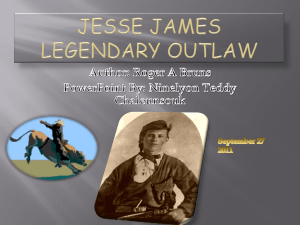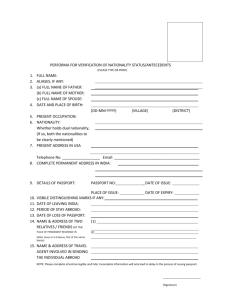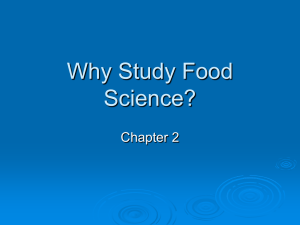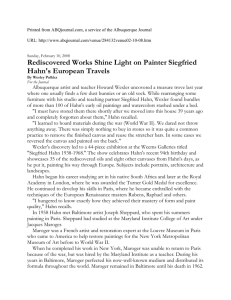NOVA Einstein scientists
advertisement
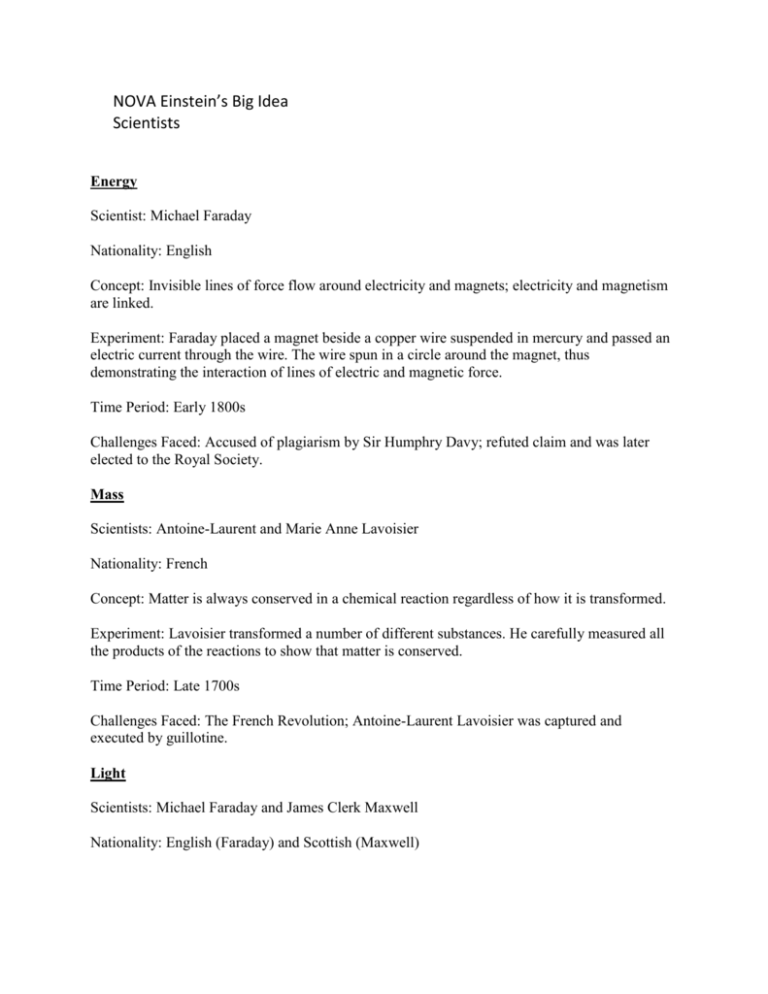
NOVA Einstein’s Big Idea Scientists Energy Scientist: Michael Faraday Nationality: English Concept: Invisible lines of force flow around electricity and magnets; electricity and magnetism are linked. Experiment: Faraday placed a magnet beside a copper wire suspended in mercury and passed an electric current through the wire. The wire spun in a circle around the magnet, thus demonstrating the interaction of lines of electric and magnetic force. Time Period: Early 1800s Challenges Faced: Accused of plagiarism by Sir Humphry Davy; refuted claim and was later elected to the Royal Society. Mass Scientists: Antoine-Laurent and Marie Anne Lavoisier Nationality: French Concept: Matter is always conserved in a chemical reaction regardless of how it is transformed. Experiment: Lavoisier transformed a number of different substances. He carefully measured all the products of the reactions to show that matter is conserved. Time Period: Late 1700s Challenges Faced: The French Revolution; Antoine-Laurent Lavoisier was captured and executed by guillotine. Light Scientists: Michael Faraday and James Clerk Maxwell Nationality: English (Faraday) and Scottish (Maxwell) Concept: Electromagnetism can be described mathematically; Maxwell's equations supported Faraday's long-held claim that light was just one form of electromagnetism. Experiment: Maxwell's ideas were theoretical. Time Period: Mid-1800s Challenges Faced: Scientists did not agree with Faraday's belief that light was an electromagnetic wave. Velocity (Speed of Light Squared) Scientists: Gottfried von Leibniz and Emilie du Châtelet Nationality: German (Leibniz) and French (du Châtelet) Concept: The energy of an object is a function of the square of its speed. Experiment: Du Châtelet analyzed experiments in which brass balls were dropped into clay; measuring their impacts demonstrated that an object's energy is a function of its velocity squared. She clarified Leibniz's original ideas about velocity. Time Period: Early to mid-1700s Challenges Faced: Scientists discounted Leibniz's ideas; du Châtelet died during childbirth when she was 43. Development of E = mc2 Scientists: Albert Einstein Nationality: German, Swiss, and American Concept: Mass and energy are the same and can be converted one to the other using the speed of light squared. Experiment: Einstein's ideas were theoretical. Time Period: Early 1900s Challenges Faced: At first no one responded to Einstein's ideas; he patiently answered letters for four years. His genius began to be recognized when his work gained the endorsement of German physicist Max Planck. Confirmation of E = mc2 Scientist: Otto Hahn, Fritz Strassmann, Lise Meitner, and Otto Robert Frisch Nationality: German (Hahn, Strassmann) and Austrian (Meitner, Frisch) Concept: The confirmation of E = mc2. Experiment: Hahn and Strassmann bombarded uranium with neutrons and discovered barium in the resulting products; Meitner and Frisch realized the results indicated that Hahn and Strassmann had split the uranium nucleus. Time Period: Mid-1900s Challenges Faced: Because she was Jewish, Meitner was forced to flee Germany and compelled to collaborate by mail with Hahn and Strassmann; Hahn never acknowledged Meitner's work.
